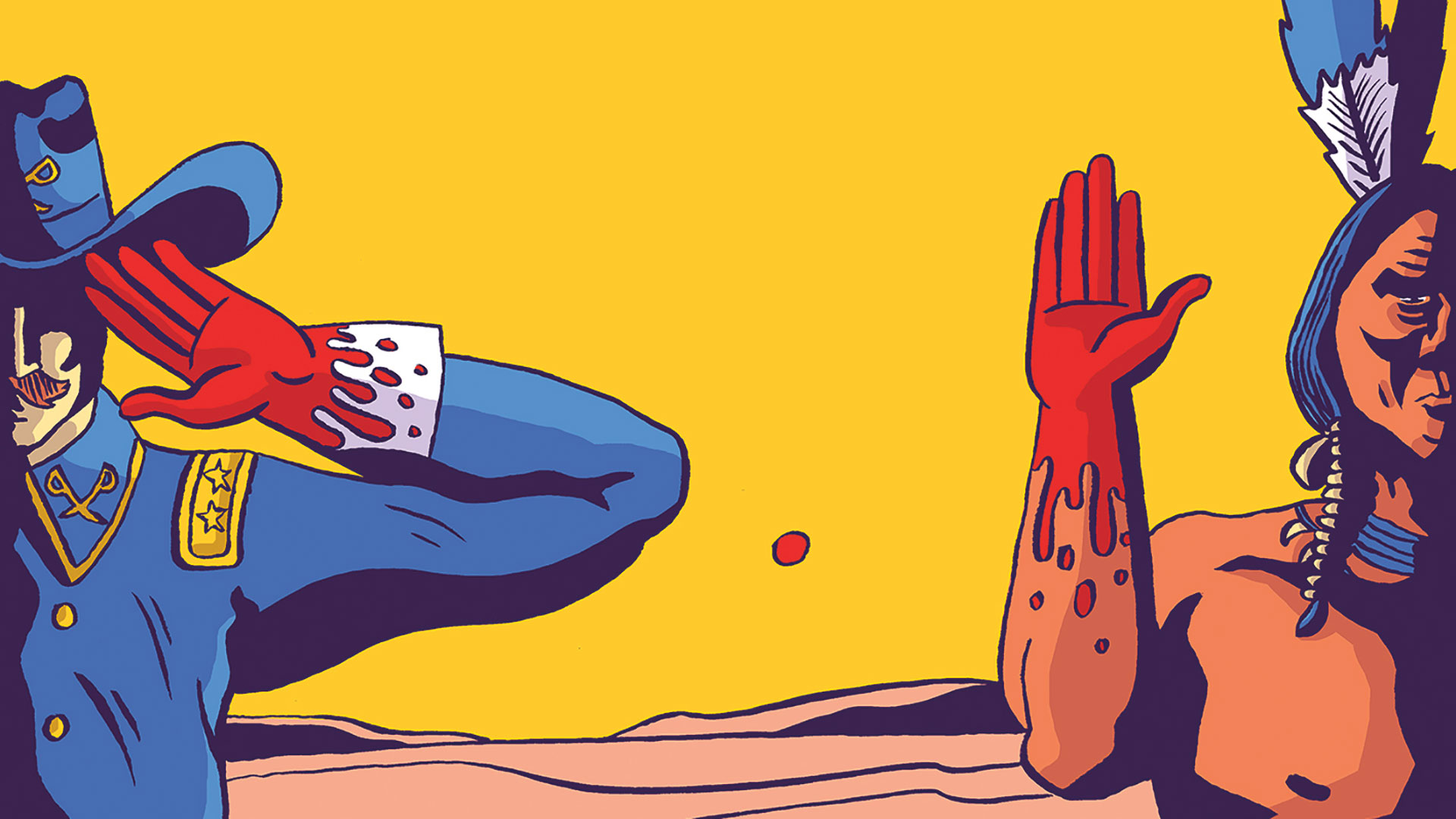Subtitled The Epic Story of the Indian Wars for the American West, The Earth is Weeping is indeed a weighty tome, clocking in at more than 500 dense pages of facts and analysis of the battles between the American armies and the Native American tribes in the latter half of the 19th century.
Peter Cozzens has written many books on American and Native American history already, and the author sees this sweeping overview in one respect as an answer to Dee Brown’s iconic 1970 book Bury My Heart at Wounded Knee.
Cozzens argues that that book, with its huge cultural significance, was far from balanced and lacked the subtlety and nuance needed to fully examine the Indian Wars from all sides. The Earth is Weeping is an attempt to do just that.
Massacres were committed, orders disobeyed, and battles won and lost; Cozzens’ meticulous prose brings it all to life
Cozzens argues coherently that while many atrocities were inflicted upon the tribes, it was not a cogent Washington policy to commit genocide on the Native Americans. Similarly, Cozzens is open and insightful about both the warring nature of the tribes, and the differences between tribes in different parts of the country. Many tribes viewed the white man’s government as protector against rival tribes, and there were even differences of attitude to the invaders within a single tribe.
Cozzens addresses all of this without histrionics, and while his prose is slightly workmanlike, it does build to a cumulative picture that packs a real punch. Massacres were committed, orders disobeyed, and battles won and lost – and Cozzens’ meticulous research and sourcing brings it all to life on the page.
While there was undoubtedly both good and bad behaviour on all sides, this overview does still build up to a depressing picture of a shameful period of American history. It is not a book that will send you away feeling good about humanity but it’s a deep and thoughtful approach to its difficult subject matter.









